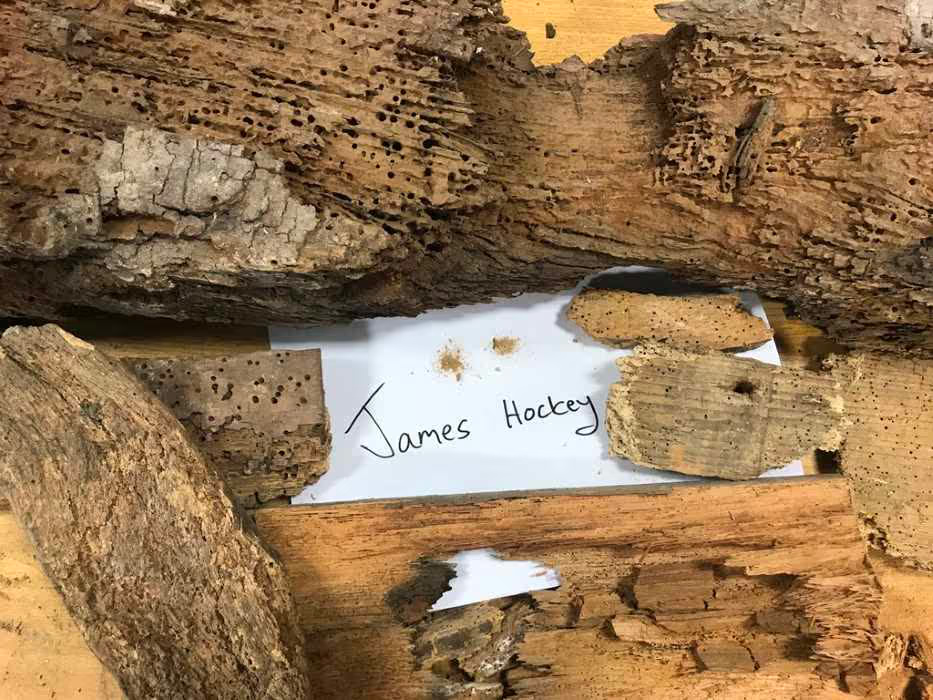Guide to woodworm
Woodworm is a generic term for different species of wood boring insect. Different species have vastly different implications in respect of risk of structural damage to timber within buildings, and it is therefore essential in the first instance both to identify species, and also whether it is active or not.

By James Hockey


Understanding Woodworm and its impact
Woodworm is a general term for various species of wood-boring insects, each of which can pose different levels of risk to the structural integrity of timber in buildings. Before deciding on any treatment, it’s crucial to first identify both the species involved and whether the infestation is still active.
There are several ways to identify a woodworm infestation. You can look at the size and shape of the exit holes left behind when beetles emerge from the wood, as well as the appearance of the bore dust (also known as frass). The size, shape, and colour.
of the frass, along with whether it looks fresh, can give clues. Other factors include the type of timber, where the damage is located, and whether there's any other decay present. It also helps to determine whether the damage is in the sapwood or heartwood, and whether any adult beetles are still visible.

Key Factors for Identification
Identification of woodworm infestations can be determined by several factors:
- Exit Holes: Size and shape of holes created when beetles exit the timber.
- Bore Dust (Frass): Size, shape, and color of the dust. Is the frass fresh?
- Timber Type: Consider whether the infestation is in sapwood or heartwood.
- Location of Damage: The position of the holes or other signs of damage.
- Other Decay: Is any other form of decay present?
- Adult Beetles: Presence of adult beetles can also be an indication.
Not every species of woodworm poses a serious threat. If the infestation isn’t active or the species is relatively harmless, treatment might not be necessary at all.
For example, the Bark Borer Beetle (also known as Ernobius mollis) primarily lives in forests and tends to burrow through bark and the superficial layers of sapwood just beneath it. In buildings, timber beams or joists with bark remnants (waney edges) may show signs of attack by this beetle. However, because it’s a forest beetle, it doesn't pose a real risk to the timber structure. In most cases, removing the bark is enough to address the problem, and no further treatment is required.
On the other hand, the Common Furniture Beetle (Anobium punctatum) is more problematic. It leaves small, round exit holes (about 1.5mm to 2mm in diameter) and tunnels through sapwood, potentially causing significant damage if left unchecked.
A more severe but rarer issue is the Deathwatch Beetle (Xestobium rufovillosum). This species typically infests oak and prefers partially decayed timbers. It leaves larger exit holes, about 3mm in diameter, and can tunnel extensively through both sapwood and heartwood, causing substantial structural damage.
We provide a single point of responsibility protecting all stakeholders.
We take full accountability for the waterproofing process, serving as a single point of responsibility to ensure seamless coordination and execution. This approach protects all stakeholders by minimising risk, eliminating communication gaps, and ensuring the highest standards of quality and reliability throughout the project.
Find out more
